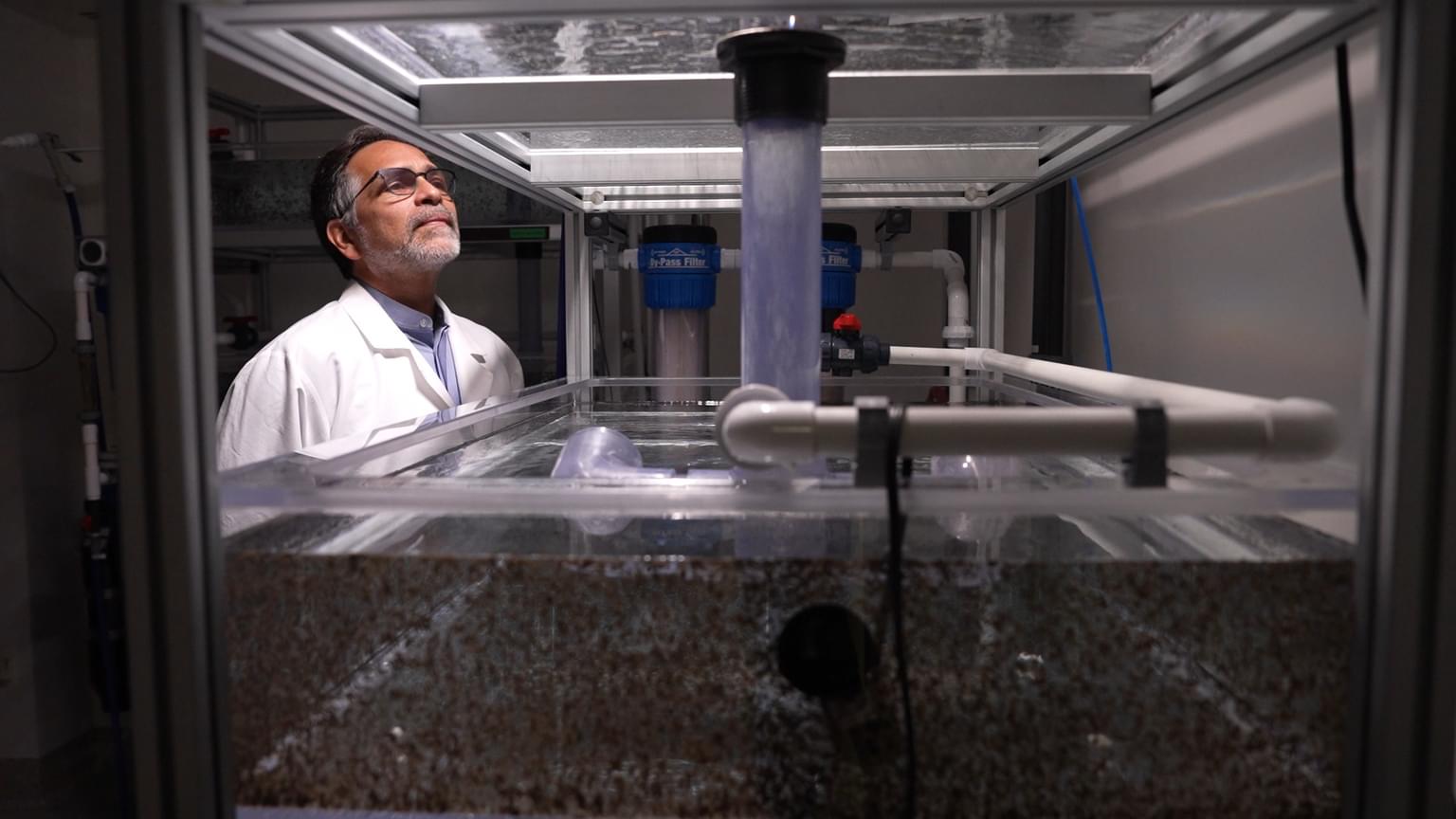News

03 April 2025
Does a cell’s “type” define its function?
A recent article co-authored by Stowers Investigator reviews current neurobiology research to highlight and foster scientific discussion.
Read Article

By Anissa Orr
They put themselves first, don’t help others, and will do anything to get ahead. They’re “selfish genes,” and they have no apparent redeeming qualities, save one—these genetic parasites may offer new insight into infertility, disease, and even evolution.
“They have the power to explain some of the mysteries of biology,” says Stowers Assistant Investigator Sarah Zanders, PhD, who is studying how selfish genes wreak havoc on the genomes and organisms they inhabit.
To be fair, selfish genes aren’t the only ones looking out for number one. All genes are selfish in a sense. “If you’re a gene, your goal is to make it into the next generation. That’s how you survive,” Zanders says.
But it’s the way selfish genes game the system that sets them apart, and makes them so captivating to study. Selfish genes are like parasites, because they do nothing to promote the overall fitness of an organism. Instead, their sole purpose is to survive and spread.
How do they get away with it?
That’s what Zanders wants to know. She’s exploring the crafty and creative ways meiotic drive genes, a type of selfish gene, hijack sexual reproduction.
The trouble starts in meiosis—the form of cell division that creates sex cells, called gametes, like eggs and sperm. During meiosis, a male normally produces sperm having the X chromosome and sperm carrying the Y chromosome in equal numbers, and he fathers sons and daughters at an equal frequency.
But when selfish genes are at work, they can override this process. For example, if the male has a gamete-killing meiotic drive gene on his X chromosome, the sperm carrying that chromosome can destroy the sperm that carry the Y chromosome—killing up to half the sperm.
When the sperm compete to fertilize an egg cell, those with the X chromosome outnumber the ones with the Y chromosome and have greater odds of success. So, the male fathers only daughters. Or he doesn’t have enough healthy sperm to have a shot at fertilizing the egg, rendering him infertile. Therein lies a potential paradox: an infertile individual can’t pass a selfish gene on to the next generation.
But selfish genes aren’t exactly big-picture thinkers, and they continue their self-serving ways. This behavior, called meiotic drive, has been observed across the spectrum of organisms used for research, and in human females. The gamete-killing type of meiotic drive remains elusive because it is so difficult to test. However, that will likely change with more innovations in technology and DNA sequencing, Zanders says.
Meiosis has fascinated Zanders since she was a graduate student at Cornell University studying meiotic recombination, a critical step in the formation of gametes. She remembers hearing Harmit S. Malik, PhD, a Howard Hughes Medical Institute investigator at the Fred Hutchinson Cancer Research Center (FHCRC), speak about how selfish genes could drive the evolution of genomes. Intrigued, Zanders joined FHCRC after graduation as a postdoctoral fellow to learn more.
While there, she discovered three independently acting meiotic drive genes, called wtf genes, in the hybrids of two fission yeasts, S. pombe and S. kambucha. The two species can mate to produce hybrids, but their hybrids have low fertility, also called hybrid sterility.
Zanders discovered that the low fertility was the result of meiotic drive genes killing the yeast gametes that had not inherited these genes. When all the meiotic drivers acted together, they kept the two yeast species from reproducing.
Her findings, published in 2014 in the journal eLife, suggest that selfish genes play a role in speciation, the evolutionary process that keeps species distinct from one another.
We can look to the mule for a four-legged example of this phenomenon. While horses and donkeys can mate to produce mules, hybrid mules can’t produce offspring of their own, because they are infertile.
Zanders’ research dovetails nicely with the Institute’s research on the biology of chromosomes, says Stowers Scientific Director Robb Krumlauf, PhD.
“One major focus of our chromosome research is the process of meiosis,” he says. “Sarah’s work on meiotic drive is exploring and uncovering new mechanisms that explain how some genes can bias the outcomes in unexpected ways. This has important implications for genetic diversity in a population.”

Zanders is eager to see what her research uncovers.
“Given its likely impact, meiotic drive is widely understudied. Many scientists have not even heard about it,” she says. “When we have visiting scientists, I love to be the first to tell them about meiotic drive. It is very exciting.”
Since joining the Stowers Institute last summer, she’s immersed herself in the collaborative environment, aided by two predoctoral researchers, María Angélica Bravo Núñez and Nicole Nuckolls. The pair investigated meiotic drive in the lab of Sue Jaspersen, PhD, a Stowers associate investigator who studies the structure and geography of the cell’s nucleus, until Zanders arrived and set up her own lab. The temporary situation built bridges between the two labs. Zanders and Jaspersen recently submitted a paper for publication identifying and characterizing a new meiotic drive gene.
Zanders has also enlisted the help of the Stowers Microscopy Center’s Jeffrey Lange, PhD, for an up-close, live look at products of gamete-killing meiotic drive genes and their behavior.
Gamete-killing meiotic drive genes make two different proteins: one is poison and one is an antidote. It can be challenging to differentiate them under a microscope, because autofluorescence (the light that cells naturally emit) interferes. To solve this problem, the researchers modified the proteins to glow green (for the poison) and red (for the antidote). Then they observed the sample through a sophisticated fluorescence microscope with a spectral detector, an attached device that can break up different wavelengths of light. The process is called linear unmixing.
“The idea is to use linear unmixing to separate the two components and get a true picture of what is going on and not the autofluorescence signal that just convolutes the image,” Lange says.
He also worked with Bravo Núñez and Nuckolls to develop an innovative surface coating that sticks yeast to the slide, while keeping them “happy and alive.” And he is using a method called single-particle tracking to follow tiny dots of the poison, called puncta, as they travel throughout the cell. These tools are helping Zanders’ team visualize how gamete-killing meiotic drive genes accomplish their task.
Zanders has also partnered with mathematician Boris Rubinstein, a Stowers research advisor, to predict the long-term effects of selfish genes on a species. Consider, for example, a male who has a gamete-killing meiotic drive gene on his X chromosome. “Over time, what would happen is that more and more men would father only daughters. Then there would not be enough men to go around. This process can drive a species extinct,” Zanders says. Rubinstein’s mathematical models determine the influence of various factors on the extinction rate and help Zanders and her team determine whether their predictions are on the right track. “If our results in the lab match his model’s predictions, we must have the biology right. If our data don’t match the model, it tells us there is something about the biology we have missed.”
Zanders credits these kinds of collaborations for propelling her research forward. “Here at the Stowers Institute, you have people at the top of their field, and yet their interest is to collaborate. In the future, we hope to work with the proteomics team as well. Our collaborations have been very fruitful so far.”
Zanders plans to delve even deeper into the mechanisms driving selfish genes and identify more selfish genes. She believes they have the potential to answer fundamental questions that have long puzzled scientists.
“If we can find out more about these selfish genes, then we can better understand how they affect human health, and infertility and evolution,” she says.
News

03 April 2025
A recent article co-authored by Stowers Investigator reviews current neurobiology research to highlight and foster scientific discussion.
Read Article
News

01 April 2025
Brown, who held key leadership roles for both organizations, passed away March 27, 2025.
Read Article
Press Release

27 March 2025
Alejandro Sánchez Alvarado, Ph.D., receives recognition as a leader and expert in regenerative biology and its potential to transform human health.
Read Article
